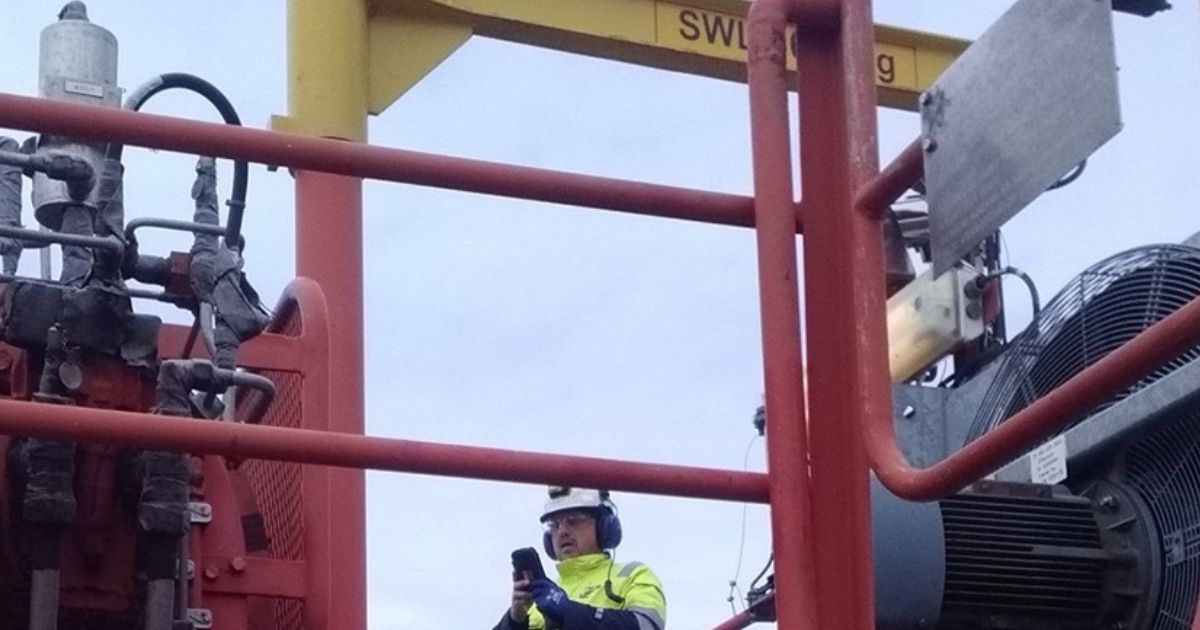Remote Survey: A New Normal for Oil & Gas

Oil and gas industry interest is surging in using remote survey technologies for more cost-efficient, safer, and lower-carbon certification, verification and inspection of assets and operations.
Amid COVID-19 travel restrictions in 2020, DNV GL has conducted more than 4,000 remote surveys for the sector. These have provided the supply chain with the assurance it needs to keep projects and operations running safely and on schedule.
Remote surveys involve fixed and mobile cameras (e.g., smartphones) giving customers instant access to DNV GL experts worldwide for verification, classification and certification of assets, verification of materials and components, inspection, and marine assurance.
The growing track record for remote survey technology could soon make it the method of choice for inspections in some places and circumstances, according to a senior expert at one leading oil and gas exploration and production company.
DNV GL led a pilot project with Aker BP to remotely perform inspections of the operator’s offshore cranes on the Norwegian Continental Shelf (NCS) as part of annual surveys due during the pandemic. Based on an agreed checklist of selected safety functions, crane operators and specialized crane technicians used intrinsically safe smartphones to take close-up video and pictures for sharing with DNV GL’s onshore inspectors.
On the normally unmanned Valhall Flank West platform, the survey of a one-year-old box boom pedestal crane featured auto-testing of the automatic overload protection system. It was the first time this crane was inspected by Aker BP. A similar inspection program was performed on two knuckle boom cranes on a floating production, storage and offloading (FPSO) vessel in Skarv, Aker BP’s most northerly producing field. The latest evolution of remote inspection was completed in week 48 on Valhall drilling platform, where the inspector from DNV GL participated live via video.
“Aligned with our 'Remote First' philosophy, remote survey should, where feasible, become the new base case in the offshore oil and gas industry after COVID-19 travel restrictions are lifted,” said Stig Sund, Digital Operations Manager, Aker BP.
Building trust in remote survey
Opting for remote survey for the Valhall Flank West and Skarv cranes has been useful as both Aker BP and DNV GL prioritize safe working for personnel during the pandemic. The tactic also aligns with Aker BP’s goal to minimize its operational carbon footprint.
The industry has historically sent personnel out by helicopter to perform inspection work, but coronavirus increased the risk associated with travelling offshore. “Now we are moving people out of harm’s way, and this may subsequently reduce risk level on the NCS to an even lower level than before the pandemic,” Sund suggested. “We also see remote inspection as an enabler for improved work-life balance as experts are becoming location agnostic.”
 Stig Sund, Digital Operations Manager, Aker BP
Stig Sund, Digital Operations Manager, Aker BP
Aker BP had no reservations about remote survey but wanted to see proper management of both the risk and the change process, he added: “DNV GL brought appropriate experience from the maritime and oil and gas sectors and showed an immediate willingness to explore new ways of working.”
While remote survey could become “the new normal” post-COVID, both operators and vendors will have to build trust in the technology and adapt to change, he observed: “By playing an active role in updating frameworks and standards, certification bodies can help to promote uptake of remote survey.”
With the pilot project having proved that the remote survey technology worked for inspecting the cranes, Aker BP is working towards establishing a best practice and will drive continuous improvement as part of the trust-building process.
“Ultimately, the new normal has to be mutually beneficial for both parties, and the change may trigger the need for business model innovation,” Sund concluded. Other DNV GL collaborators and customers are already considering innovations including making more use of real-time monitoring, so that the company’s experts can perform more witness inspections from wherever they are.
Identifying best uses for remote survey
As experience with remote survey grows in the sector, operators are forming a clearer picture of where and how it might work best. For example, some regard it as good for hazardous areas, such as in electrical inspection, where inspectors can zoom in a remote camera to examine junction boxes and electrical glands and see nameplates and serial numbers on equipment and components.
Barriers to remote survey include the fact that not all locations for oil and gas production are served equally well, or at all, by good wireless communications. There are also change-management issues for potential users with varying degrees of comfort and expertise in using information and communication technologies.
That said, remotely collecting high quality digital images, streaming video, and other data aligns neatly with the industry’s increasing use of data and data analytics, and with ongoing research into automation that could one day lead to robots taking a camera to where an inspection is needed. Together with software company Cognite, Aker BP has recently been testing robotics systems for remote control on Skarv. The systems include a four-legged robotic ‘dog’ enabled with sensors and cameras.
“Deploying and relying on digital technology to remotely perform the inspection and survey of safety critical equipment has already been here for a while and has been accelerated by the constraints imposed by the pandemic,” said Astri Haukerud, Global Service Area Leader - Technical Assurance Verification, DNV GL - Oil & Gas. “Although some projects are at the pilot stage, we are seeing more companies, depending on the type of projects, now using remote inspection as an accepted method and the ‘go to’ technology. It will be interesting to see when it will be fully considered as the equivalent of being physically onsite.”

